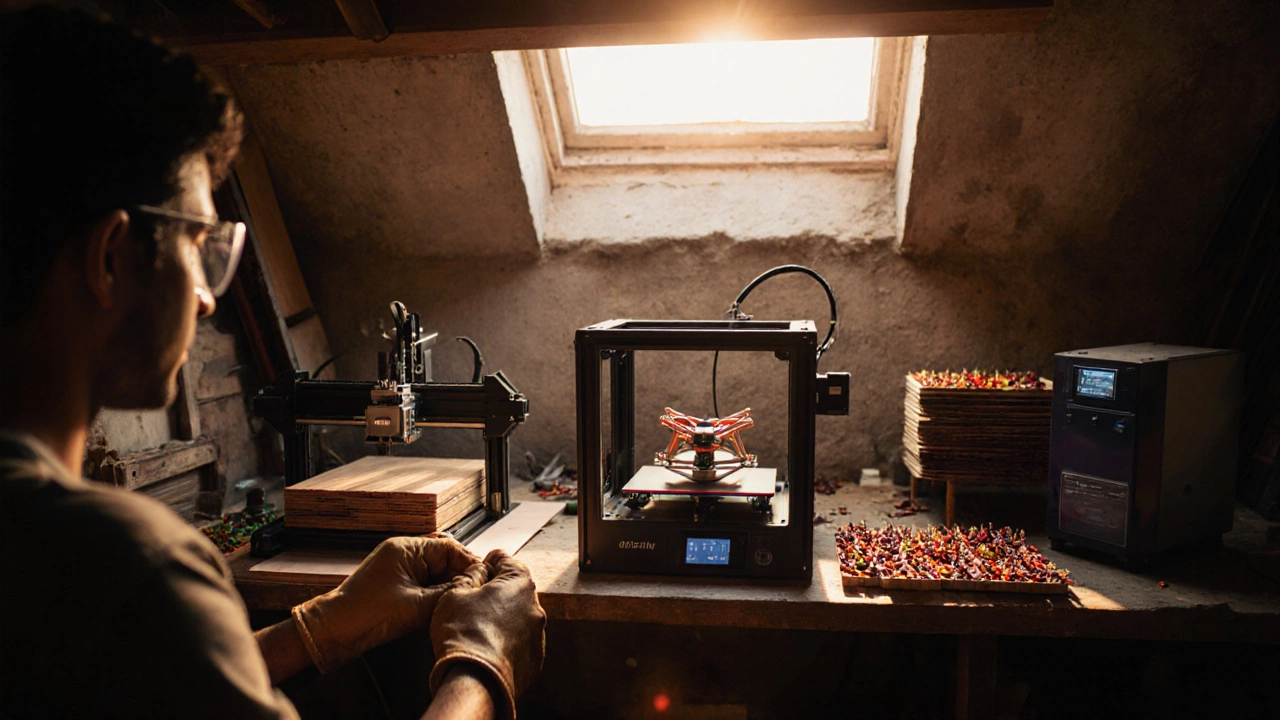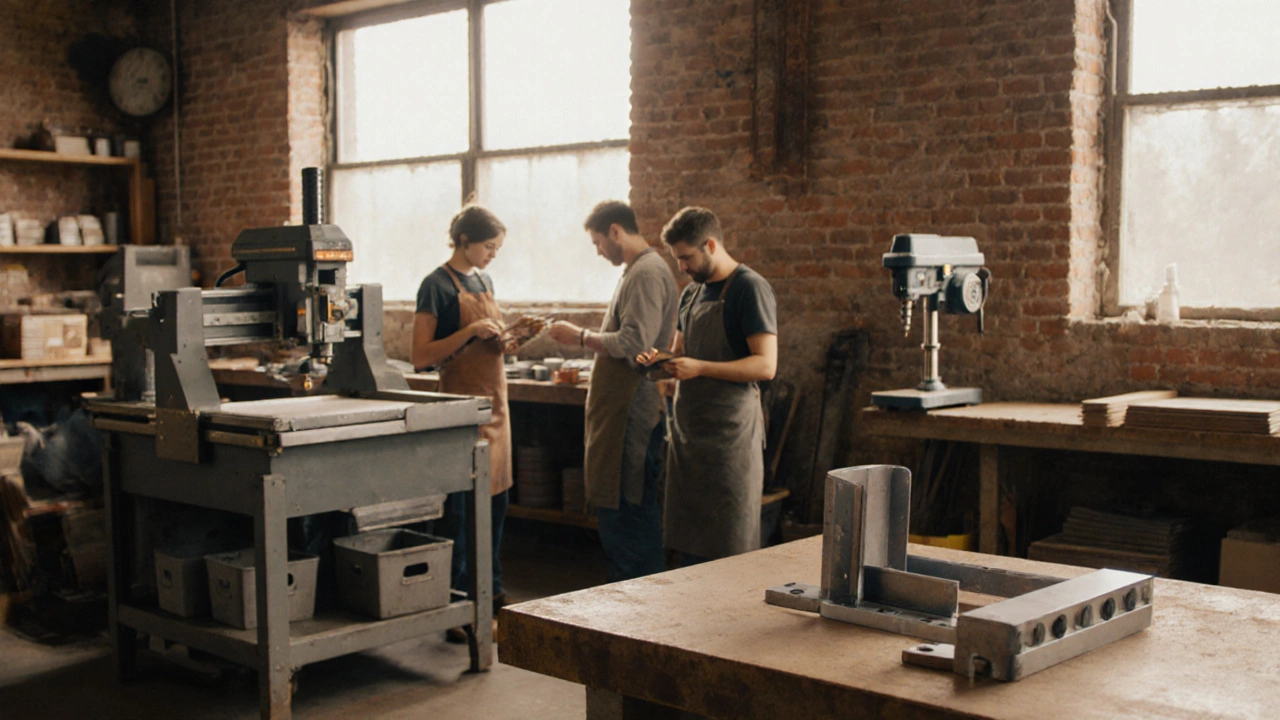Small Scale Manufacturing: What It Is and How to Get Started
When you hear "manufacturing" you probably picture huge factories, endless assembly lines and massive budgets. Small scale manufacturing flips that picture on its head. It means making goods in a compact space, often with a handful of workers, low‑cost equipment and a focus on niche markets. Think of a local artisan turning raw material into handcrafted furniture, or a tech hobbyist producing a limited run of smart sensors. The idea is simple: start small, learn fast, and grow when you see real demand.
Why Choose Small Scale Manufacturing?
First off, the entry barrier is much lower than for a full‑blown plant. You don’t need acres of land or millions of rupees in capital. A modest workshop, a few tools and a clear product idea can be enough to begin. This also means lower risk – if the market doesn’t respond, the loss is manageable.
Second, you get to stay close to your customers. Small batches let you test designs, gather feedback and tweak the product before committing to larger runs. This agility is a huge advantage in today’s fast‑changing market where trends shift quickly.
Third, the Indian government offers several schemes for micro and small enterprises – from subsidised loans to tax breaks. Tapping into these can shave off a big chunk of your startup cost.
Step‑by‑Step Guide to Launch Your Production
1. Define aClear Niche – Pick a product that solves a real problem or serves a passionate community. Research online forums, local markets and competitor offerings. A focused niche reduces competition and makes marketing easier.
2. Sketch a Simple Business Plan – Outline your product, target customers, pricing, and a rough cost sheet. Include how many units you’ll make in the first month and what profit you expect. Keep it short; the goal is to spot gaps before you spend money.
3. Secure Funding – Start with personal savings or a small loan from family. If you need more, explore government schemes like the PMEGP (Prime Minister’s Employment Generation Programme) or micro‑finance institutions. Having a clear cost breakdown makes lenders more comfortable.
4. Choose the Right Space – A garage, a rented cubicle or a shared maker‑space can work. Make sure it has power, ventilation and enough room for the equipment you plan to use.
5. Get the Equipment – For many products, second‑hand machines or DIY setups are enough. For example, a small CNC router, a basic metal lathe or a sewing station can be bought at a fraction of the price of new gear.
6. Protect Your Idea – If your product is unique, file a provisional patent before you start full production. A provisional filing costs less and buys you a year to develop the product while keeping competitors at bay.
7. Set Up Production Workflow – Map out each step from raw material to finished product. Identify bottlenecks early; a smooth flow saves time and reduces waste.
8. Test, Test, Test – Run a pilot batch of 10‑20 units. Get real users to try them and give honest feedback. Use that data to improve design, packaging and pricing.
9. Market Your Product – Leverage social media, local fairs and online marketplaces like Amazon or IndiaMART. A short demo video or a simple photo carousel can attract attention without a big budget.
10. Scale When Ready – Once you repeat a profitable batch, consider adding a second shift, expanding the workshop or partnering with a larger contract manufacturer for bigger orders.
Starting a small scale manufacturing business isn’t about having a massive factory; it’s about turning a solid idea into a real product with the resources you have right now. Follow these steps, stay flexible, and you’ll be able to grow your operation without the huge risks that traditional manufacturing brings.

Top In-Demand Small Scale Manufacturing Products for 2025
Discover the hottest small‑scale manufacturing products for 2025, why they’re in demand, and how to launch them profitably.

Understanding Small Scale Manufacturing: Definition, Benefits & How to Start
Explore what small scale manufacturing means, its benefits, key traits, examples, and step‑by‑step guide to launch your own tiny production business.

How Much Money Do You Need to Start a Small-Scale Business? Costs, Tips & Real Examples
Want to start a small scale business? Here's how much money you'll really need, cost breakdowns, funding tips, and smart budgeting examples, all in plain English.

How to Patent an Idea and Get It Made
Thinking of turning your genius idea into reality but not sure where to start with patenting and manufacturing? This guide breaks down the steps to patent your concept and see it through to production. We explore the process of protecting your intellectual property, navigating patent applications, and moving towards small-scale manufacturing. Learn the insider tips and tricks to avoid common pitfalls and make your idea come to life.

Understanding What Small Scale Manufacturing Is All About
Small scale manufacturing, often referred to as micro or craft production, involves producing goods on a smaller scale as opposed to large factories. This form of manufacturing is essential for supporting local economies and provides opportunities for entrepreneurs with lower capital. Dive into the world of small scale manufacturing, explore its significance, and gain tips on starting your own production line with fewer resources.

How to Set Up a Small Scale Industry: A Practical Guide
Setting up a small scale industry can be a rewarding venture for aspiring entrepreneurs. This guide offers essential steps to help you start manufacturing on a small scale, covering key aspects such as planning, location, finances, and compliance. By understanding the necessary requirements and strategies, you can effectively scale ideas into a successful business model. Learn how to navigate the challenges and opportunities in this dynamic industry.

How to Successfully Launch a Small Scale Manufacturing Business
Starting a small-scale manufacturing business can be an exciting and rewarding endeavor. With careful planning, securing the right funding, and selecting the right niche, entrepreneurs can create a sustainable operation. Understanding the market demand and developing a solid business plan are crucial steps in this journey. This article provides practical guidance on how to navigate the challenges and opportunities inherent in launching a small-scale industry.






